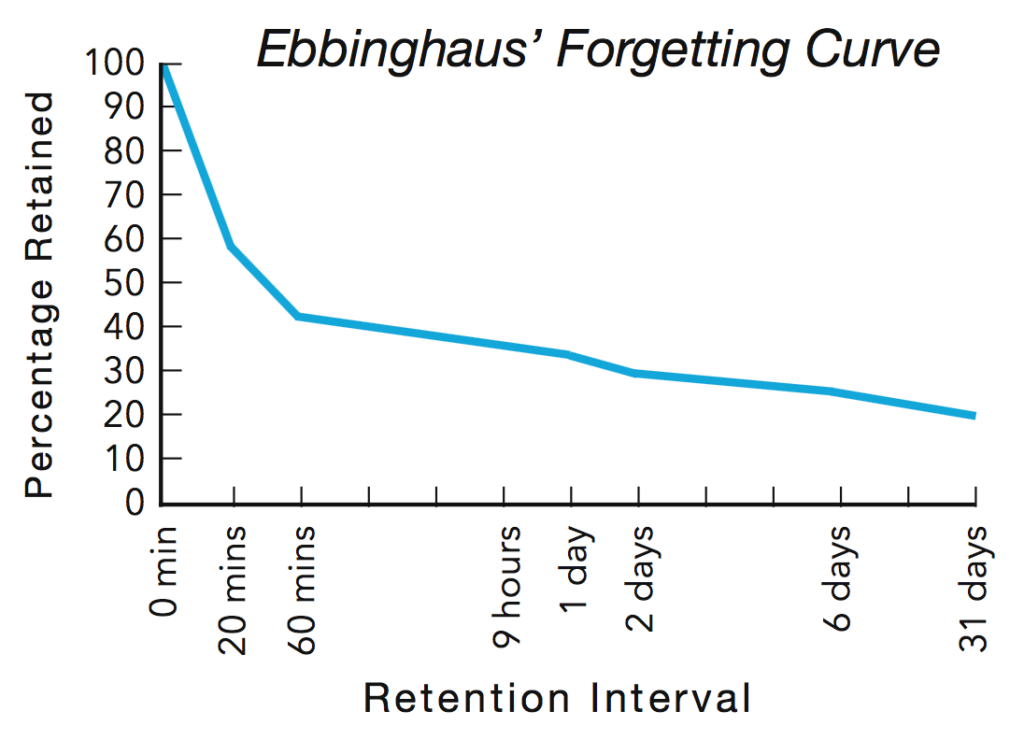
People are conservative; they like the old ways. It’s no surprise that we use learning techniques that go back hundreds of years.
Recent research reveals far more efficient methods of learning. Efficiency in learning involves three key variables: Retention, Time spent learning, and Time to mastery.
Retention and Time Spent Learning
Time is money. Organizations lose money when employees dedicate time to learning only to forget the information. The learning efficiency for that knowledge is zero. In an ideal world, employees should retain important information for 1-12 months. The “Forgetting Curve” shows how information is forgotten overtime, as studied by the German psychologist, Hermann Ebbinghaus.

Time to Mastery
Beyond retention, there is a more permanent and productive knowledge state known as mastery – a combination of confidence and correctness. When your employees achieve mastery, your organization reaps the rewards in the form of increased efficiency and revenue growth.
Mastery is achieved only when all misinformation is absent. Amplifire’s research has shown that employees confidently hold large amounts of misinformation (25-35%) – that no amount of traditional learning can wipe from their minds. Amplifire calls this Confidently Held Misinformation.
Is Your Organization’s Learning Strategy Efficient?
Learning Efficiency = (time spent learning) X (retention over time) X (costs)
If you’ve been spending time and money on inefficient learning, it’s time to consider other options.
Amplifire’s algorithm is tuned to the different ways forgetting occurs overtime – as discovered through 700 million learner interactions. For example, when misinformation is repaired by Amplifire, the system calculates its reappearance at different times in the future. It sends micro-bursts of focused learning at the time information is being forgotten.
It’s really that smart.







